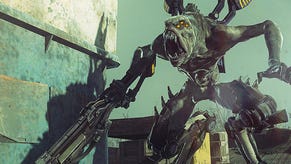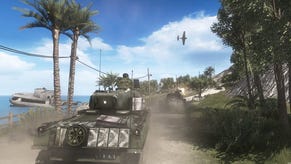Resistance 3
Judgment day.
This campaign feels designed to win over players weaned on the great story-led shooters of the 1990s, with open-ended encounters in well designed environments where player choice wins the day rather than rollercoaster funnelling. The AI isn't spectacular, but it's good enough that a change of weapon or a different strategy can radically alter the flow of a battle.
It's just a shame that a studio that has proved so canny and imaginative in some areas remains so tethered to the obvious in others. The FPS is crying out for innovation and Insomniac is clearly a developer with the right combination of craft and creativity - so the presence of some hoary old clichés dampens the mood considerably.
How to explain the boss battles against giant creatures with weak spots that are conveniently exposed and glow for good measure? (Note to game developers: evolution doesn't work like that.) How to justify the use of journals and audiologs as collectable trinkets, a once-clever narrative idea now struggling to be more than background noise? It's not Insomniac's fault that these clichés endure, or that they've long lost their purpose - but it is a shame to see them so readily deployed.
Strangely, the very things that make Resistance 3's solo campaign fly make its multiplayer games difficult to warm to. It's hard to comment on the long-term appeal of the game, given that multiplayer servers have only just been made available at time of writing, but first impressions are both promising and slightly frustrating.
With such an outlandish arsenal, finding the right balance was always going to be tough, and so it proves as new players are thrown into the fray with the bare essentials to be torn to shreds by players of a higher level who have a more robust toy box - including auxiliary abilities unique to online play such as holographic decoys, lightning shields and cloaking devices. Inevitably, starting out with one grenade and a carbine against players who can shoot through walls, round corners and turn invisible means that the climb to level 10 - at which point the playing field becomes much more even - can be a tough and not always enjoyable one.
That's a pity, as there's much to admire in the structure of the multiplayer, with 55 competitive medals over and above the Trophies, plus 47 ribbons for in-match feats. In terms of game types there's nothing here that will surprise, but the same weapon levelling from the solo mode recurs and recharging health is reintroduced online, where it makes a little more sense. It's a solid package; providing the rather crude matchmaking system keeps the lions away from the lambs, it should offer something for everyone.
It's the maps which maketh the game in multiplayer shooters, and Insomniac's work here rivals masters of the form like DICE. Most of the 12 maps are drawn from campaign locations but there are also surprises hinting at the global battle which provides the game's backdrop, with maps set in Colombia, Chad, Australia and even Wales. They're all fine examples of multiplayer design, juggling interiors and exteriors, cover points and open ground, vantage points and rat runs. Regardless of the game mode, it's a pleasure to explore them.
There's also two-player co-op, now applied to the campaign rather than boxed off into its own procedurally generated mini-stories, as in Resistance 2. It is, as always, a welcome addition, especially as it's available in local split-screen. Online, it's restricted to your friends, which feels limiting, but at least it's there.
Resistance 3 gets almost everything right, yet never quite ascends to greatness. Both single- and multiplayer urges are given equal attention, and all the boxes you'd expect a modern FPS to tick are dutifully filled in.
That sense of obligation is, perhaps, the problem. First-person shooter design has reached an evolutionary ceiling and desperately needs some mutant DNA to push it onwards and upwards. Resistance 3 could have provided that genetic jolt; but Insomniac has chosen to look back to how we used to play rather than grapple with how we could play in the future. As understandable as it is, that cautious approach results in a game that is extremely enjoyable, but never as imaginative as you want it to be.


















